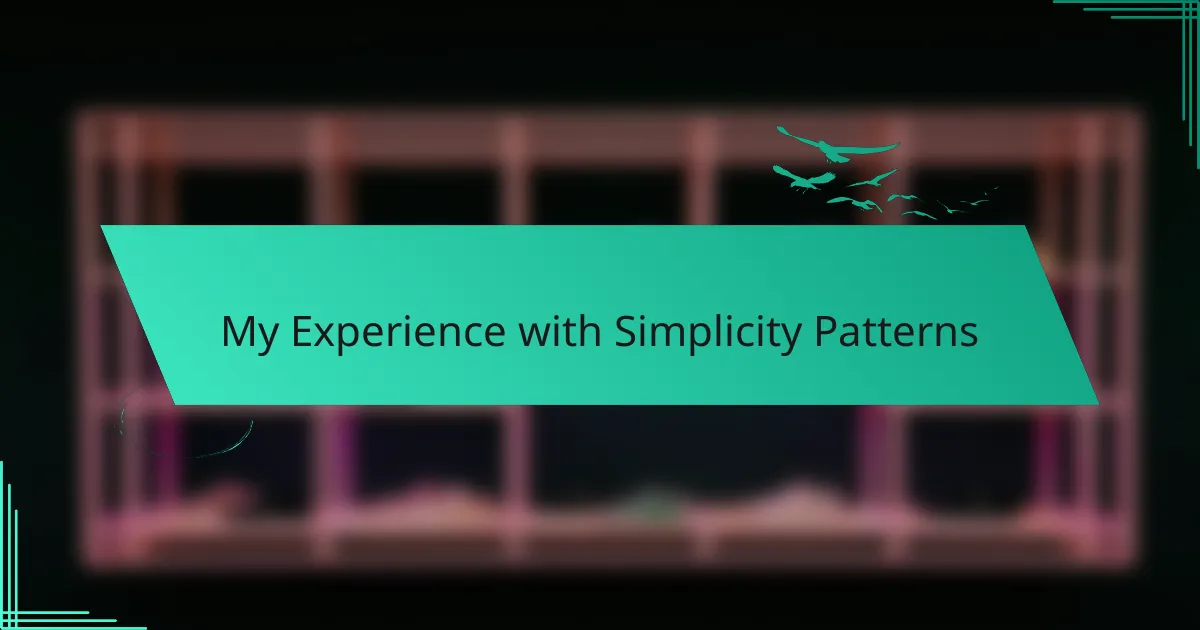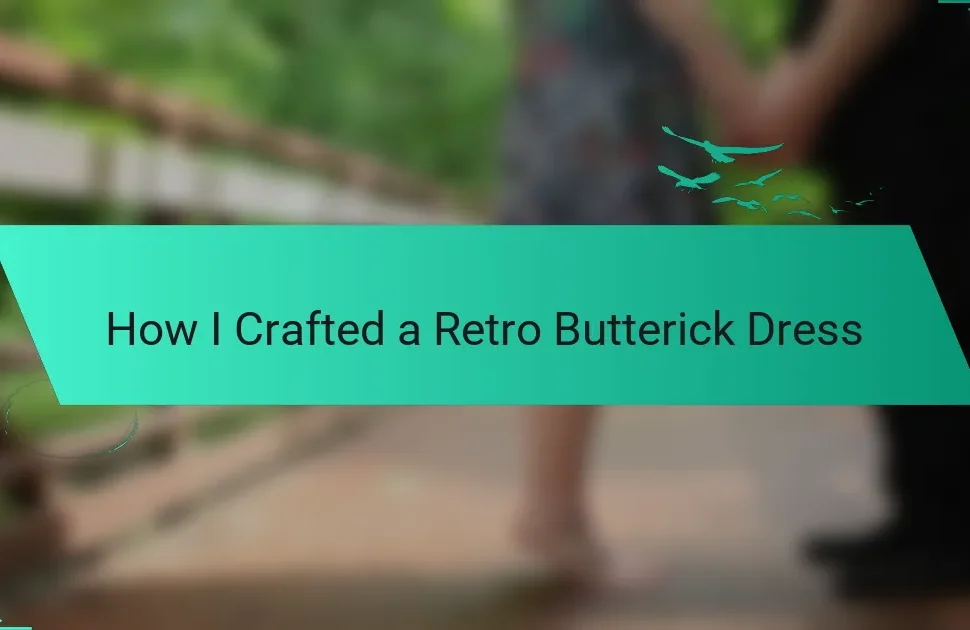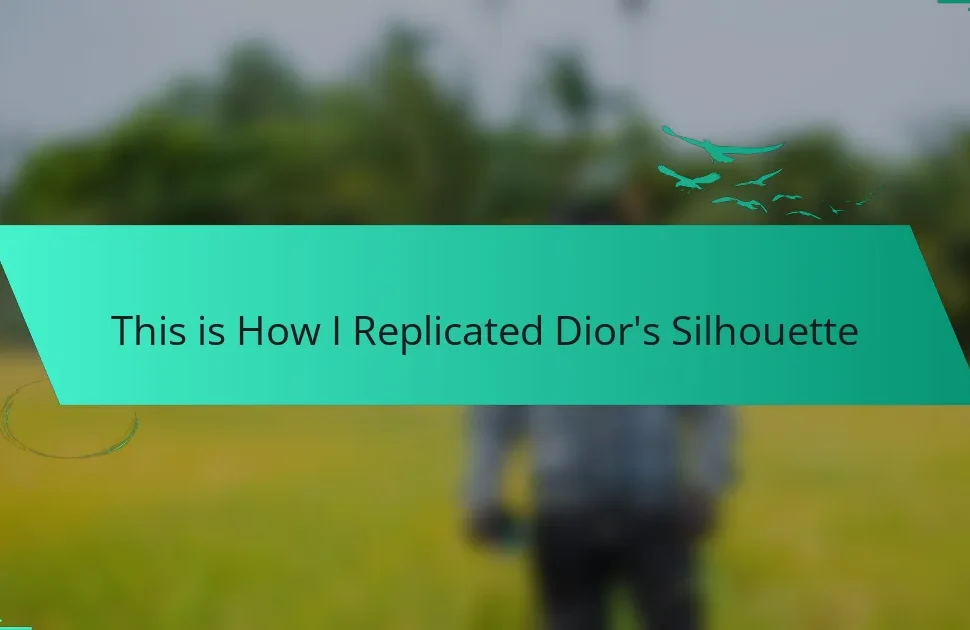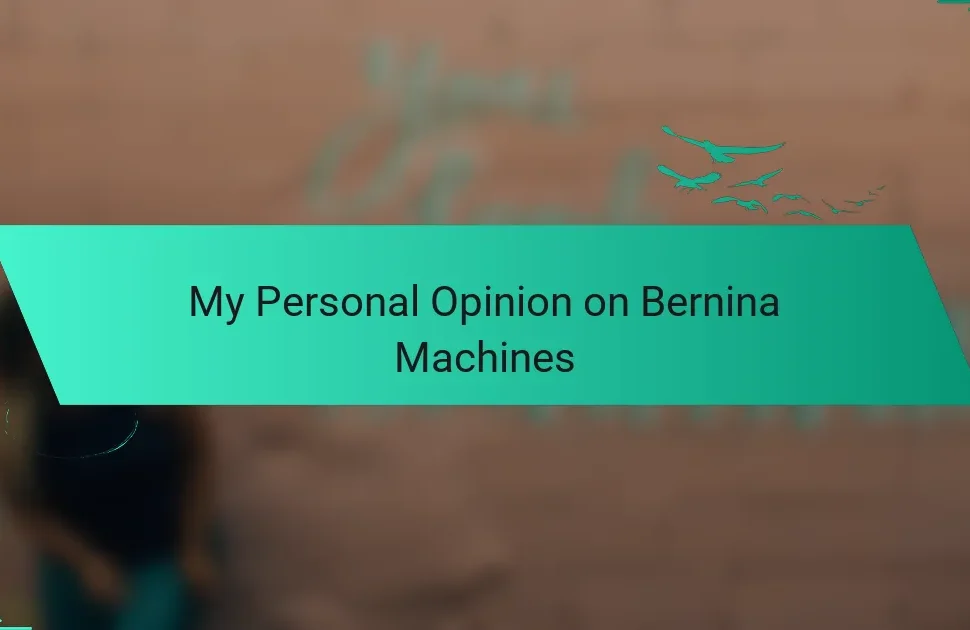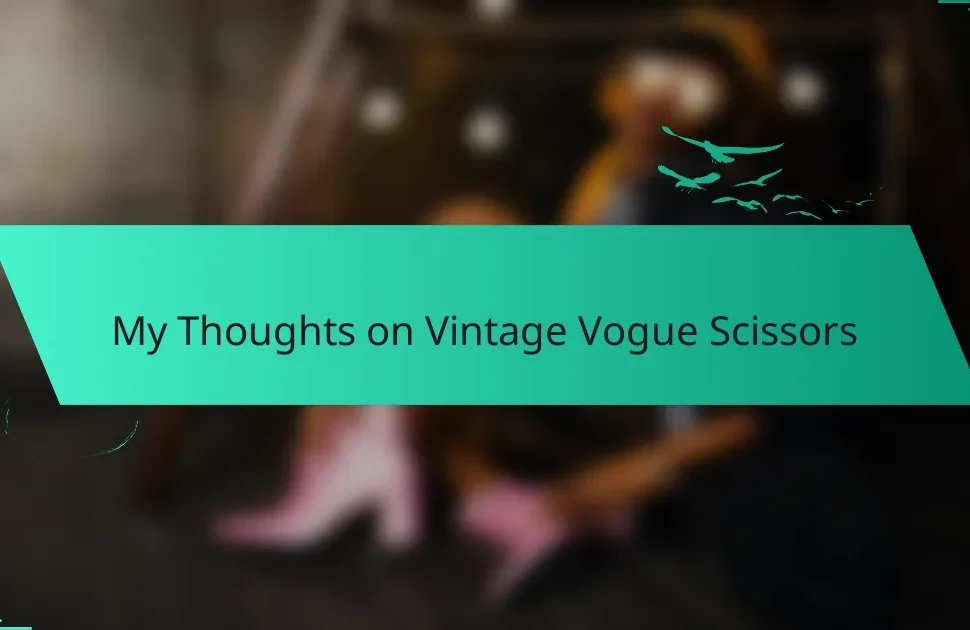Key takeaways
- Simplicity Patterns offer user-friendly instructions, a variety of styles, and accessibility for DIY enthusiasts, making them ideal for creating unique vintage-inspired fashion.
- Exploring vintage fashion allows for creative expression by mixing elements from different decades, enhancing personal style and storytelling through garments.
- DIY fashion fosters a sense of empowerment and sustainability, allowing individuals to create one-of-a-kind pieces while connecting with others who share a similar passion.
- Careful consideration of pattern selection, fabric choices, and preparation can enhance the crafting experience and lead to successful projects.
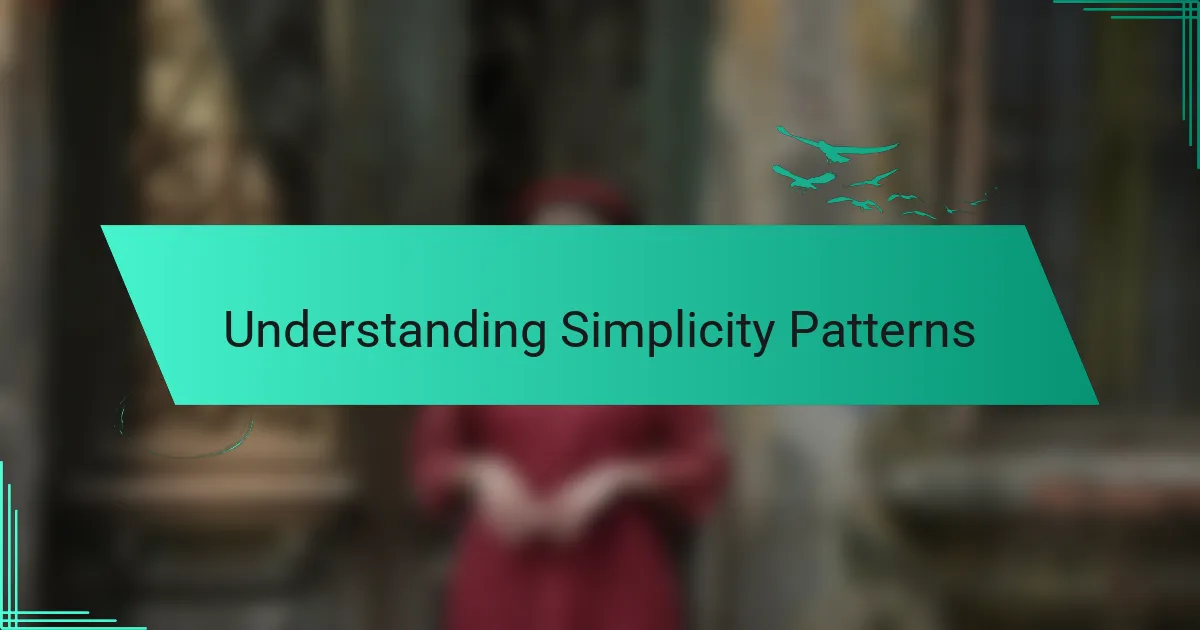
Understanding Simplicity Patterns
When I first dove into vintage fashion, understanding Simplicity Patterns was like unlocking a treasure chest. These patterns are not only user-friendly but also a gateway to creating unique pieces that reflect personal style. I remember my first attempt at crafting a 1970s dress – it was both exciting and a bit daunting, but seeing the fabric come to life was so rewarding.
Simplicity Patterns have been a staple for DIY enthusiasts, especially for those of us drawn to vintage aesthetics. They offer an array of styles that range from classic silhouettes to vibrant prints, making it easy to find a pattern that resonates with your vision. It’s fascinating how each pattern has its own story and history, bridging the gap between past and present fashion.
Here’s a quick comparison of the benefits and characteristics of Simplicity Patterns:
| Aspect | Simplicity Patterns |
|---|---|
| User-Friendliness | Easy to follow instructions suitable for beginners |
| Variety | A wide selection ranging from classic to contemporary styles |
| Accessibility | Patterns available at various price points, often found in local stores |
| Crafting Experience | Encouraging creativity while connecting to the past |
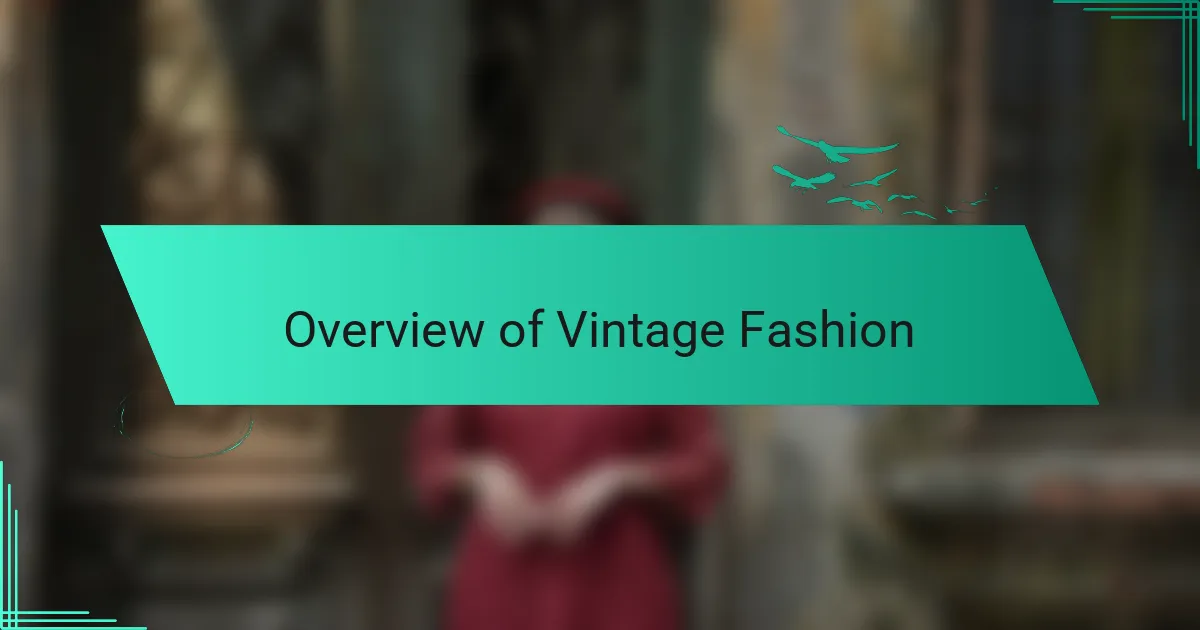
Overview of Vintage Fashion
Vintage fashion isn’t just about wearing old clothes; it’s a celebration of style that has transcended time. In my experience, each era carries a unique charm that reflects the cultural moments of its time. Remembering the first time I stumbled upon a 1950s swing dress at a thrift store, I felt an instant connection—not just to the fabric, but to the stories behind it.
When exploring vintage fashion, I’ve especially appreciated how each decade brings something distinct. For instance, the elegance of the 1920s flapper dresses contrasts sharply with the bold patterns of the 1970s. Understanding these differences can greatly inspire your own DIY projects, as you can mix elements from different periods for a truly unique look.
| Decade | Key Features |
|---|---|
| 1920s | Flapper dresses, beading, and drop waists |
| 1950s | Full skirts, fitted bodices, and pastel colors |
| 1970s | Bold patterns, bohemian styles, and bell-bottoms |
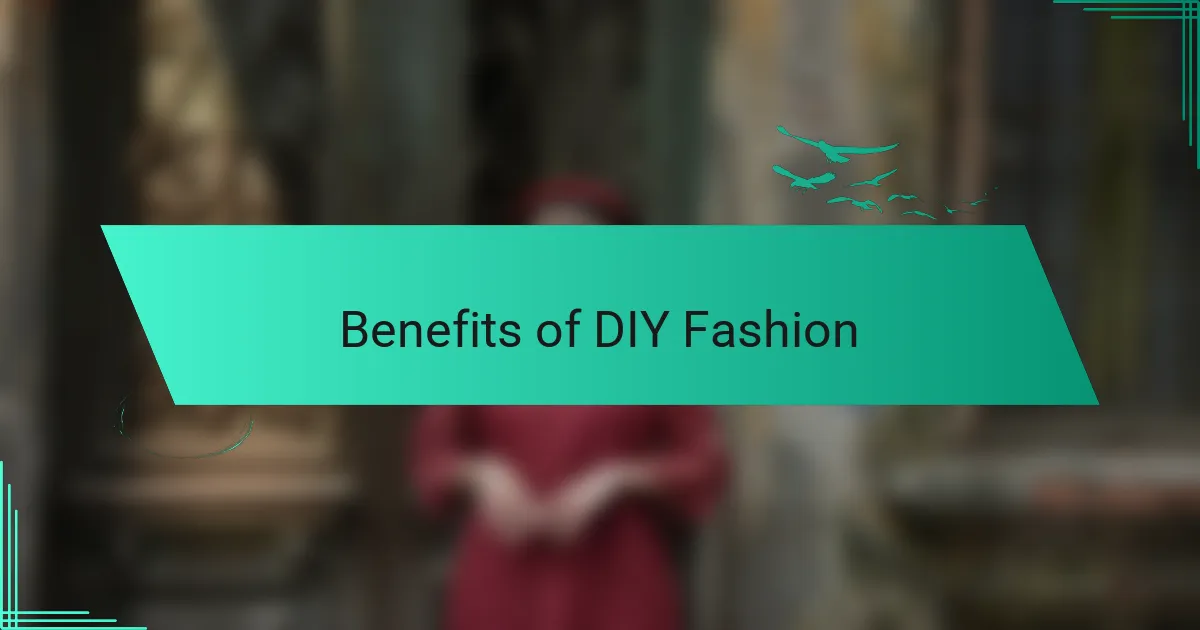
Benefits of DIY Fashion
Creating your own fashion pieces through DIY offers myriad benefits that can transform not just your wardrobe, but your mindset. One of the greatest advantages I’ve discovered is the sheer joy of crafting something with my own hands. I still recall the satisfaction of finishing my first DIY skirt — there’s nothing quite like wearing a garment that you’ve lovingly made from scratch. Isn’t it empowering to know that no one else has the same piece?
Additionally, DIY fashion serves as a fantastic outlet for creativity. I often find myself lost in the process, experimenting with fabrics and styles that I might not have the courage to wear otherwise. This exploration allows for personal expression and ensures that your outfits truly reflect who you are. Plus, it fills me with pride to know that I’m contributing to a more sustainable fashion industry by reducing waste.
Lastly, DIY fashion can be a wonderful way to bond with others. I’ve had some of my best moments crafting with friends, sharing tips, and swapping stories about our latest projects. Isn’t it inspiring to connect over a shared passion? The act of sewing or assembling patterns together strengthens friendships and creates an extended family of fellow vintage fashion enthusiasts.
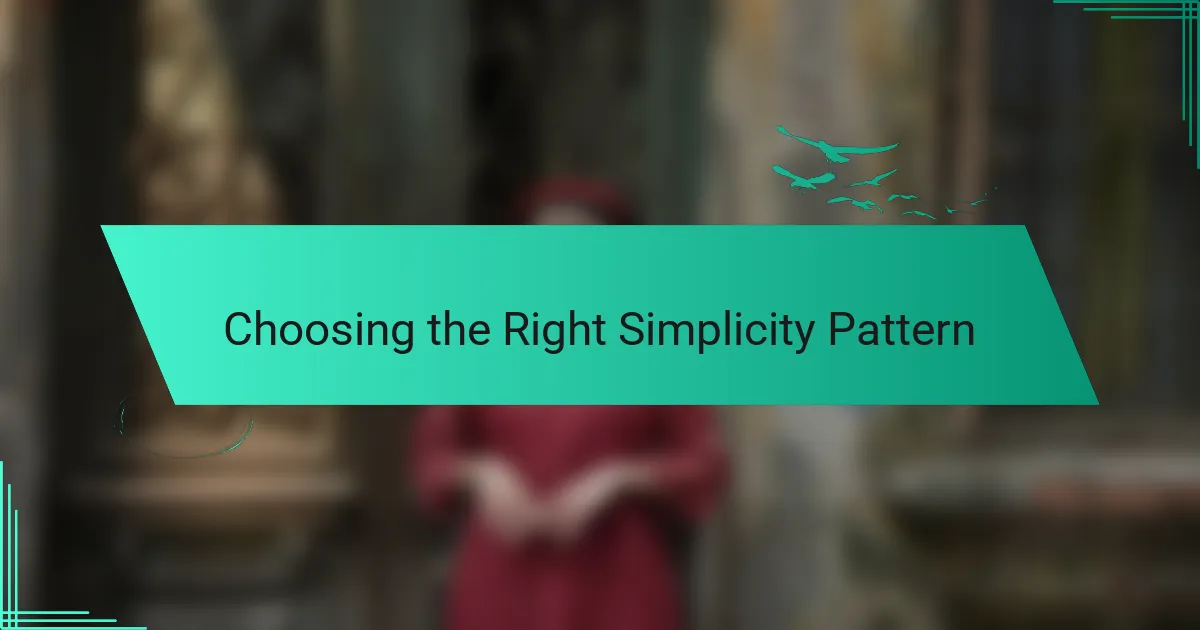
Choosing the Right Simplicity Pattern
Choosing the right Simplicity Pattern can feel a bit overwhelming at first, but I’ve learned to focus on a few key factors. When I’m browsing patterns, I often look for designs that resonate with what I love. For example, I found myself drawn to a 1960s shift dress pattern that spoke to my inner mod style. Does it evoke emotions or a nostalgic feeling? If yes, then it’s likely a winner.
I also consider the fabric I want to use before settling on a pattern. There’s something magical about imagining a particular print or texture transforming into a garment. I remember pairing a bold floral fabric with a simple Simplicity pattern, and the combination was nothing short of stunning. Have you thought about how your fabric choice can influence the final look? It’s essential to envision both the pattern and the fabric harmonizing to create something uniquely yours.
Don’t forget to check the pattern’s skill level. I’ve made the mistake of choosing a pattern that was too complex for my then-current sewing abilities, which turned a fun project into frustration. Now, I always make sure to read through the instructions first. They can divulge valuable insights that save time and effort, ensuring that each DIY adventure remains enjoyable. What patterns have you found that aligned well with your skills?
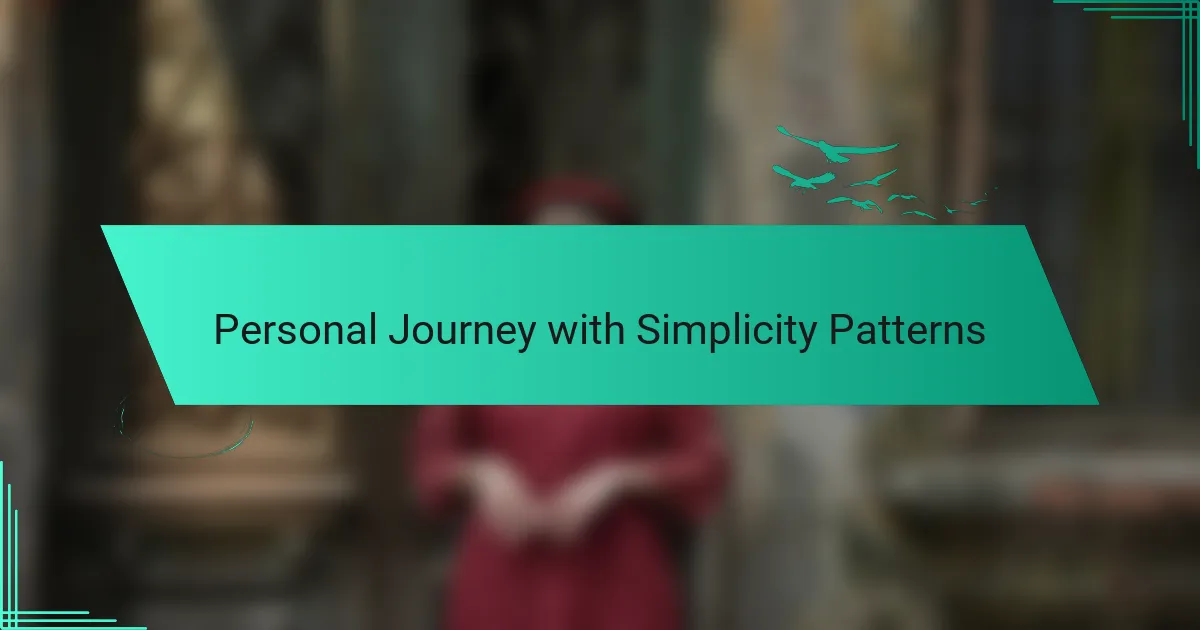
Personal Journey with Simplicity Patterns
Reflecting on my journey with Simplicity Patterns brings back a wave of nostalgia. I still remember the first time I unwrapped a pattern envelope; the crisp paper filled with illustrations sparked my imagination. It felt like I was holding the key to a world of vintage fashion—especially when I began to bring those designs to life.
One of my favorite projects was a 1960s sundress, which took hours to sew. While it was challenging, every stitch felt rewarding, connecting me with the past. I vividly recall wearing it to a summer picnic, receiving compliments that brought a smile to my face. Each time I wear it, I cherish the memories and the creative process that made it uniquely mine.
Here’s a comparison table showcasing some of the different Simplicity Patterns I’ve worked with over the years.
| Pattern Name | Era |
|---|---|
| 1960s Sundress | 1960s |
| 1970s Maxi Dress | 1970s |
| 1980s Blazer | 1980s |
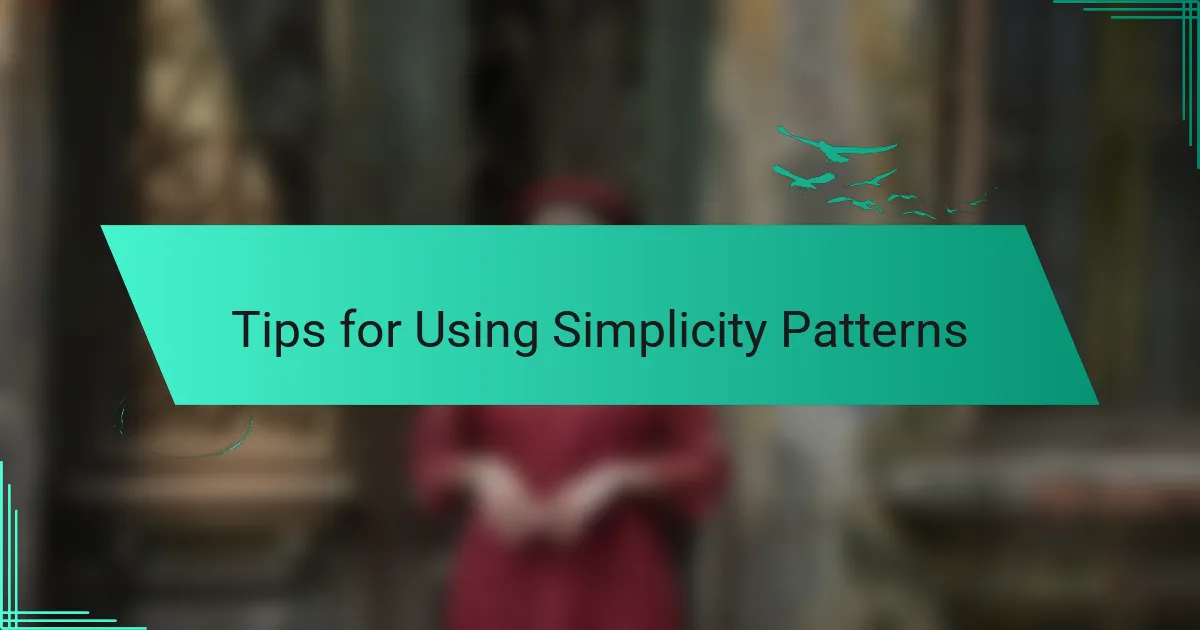
Tips for Using Simplicity Patterns
When diving into Simplicity patterns, I’ve found that understanding the design features can make all the difference in your final piece. Take the time to study the pattern envelope; it contains important information, like fabric suggestions and sizing that I’ve often overlooked only to regret it later. I remember one specific project where I didn’t follow the recommended fabric type, and the garment just didn’t come together as I had imagined.
It’s also vital to prepare your workspace and materials ahead of time. I tend to lay out all my supplies, from fabric to scissors, and even pre-wash the fabric to preemptively avoid any surprises later on. This kind of preparation not only prevents hiccups but also makes the entire sewing process more enjoyable.
- Double-check the size chart against your own measurements for a better fit.
- Choose fabric types that match the pattern recommendations for best results.
- Always read the instructions thoroughly before cutting, as they often have helpful tips.
- Use fabric markers to trace around the pattern; it saves time and reduces errors.
- Keep extra fabric on hand for mistakes—believe me, they happen!
